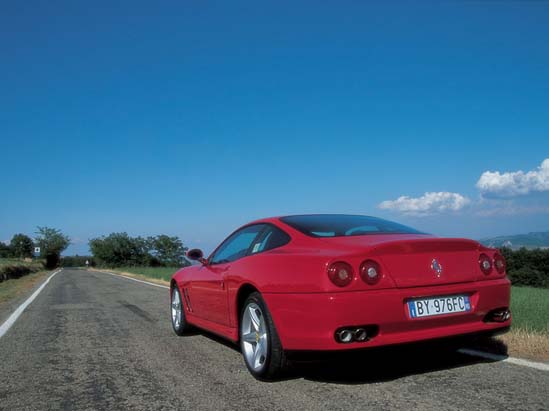Media | Articles
Take Your Best Shot
You have a fantastic new car, or you’ve been to the greatest car show you’ve ever seen, and you’ve snapped some great images. However, when you get them back or view them on your digital camera’s screen, they look nothing like the shots you see in magazines and books. The paint doesn’t sparkle and something seems wrong with the background. That car in your garage or the exotics on the greens of the golf course don’t look half as good as in person.
So what went wrong? It could’ve been a number of items, because making a car look good in photographs is part art, part science – a combination made all the better by repeated practice. The 10 tips included in this guide will help you take better pictures – quickly and easily whether you’re shooting with a digital camera or a 35mm SLR. If you want to take your photo skills to the next level, see our full-length Glove box Guide entitled Take Your Best Shot.
1 Clean the Car
If you want your car to photograph at its best, you have to make it look its best on the road. Be sure to have it clean and free of water spots. Treat the tires and rubber and plastic trim to ensure that they don’t appear brown. Also make sure that any white walls are clean. If you’re shooting the interior, you’ll want to vacuum and dust at the very least. And be sure to take detailing supplies with you, as the car may get dusty or splattered on location.
2 Keep it on the Road
Marketplace
Buy and sell classics with confidence
Cars drive on roads, whether they’re dirt, gravel, concrete or asphalt. Take the car off a road and you take it out of context. Sure, there’s an exception to every rule, but until you find that exception, keep it off the lawn.
3 Police your Location
The perfect shoot location can be ruined by weeds, an overlooked paper cup or a bunch of cigarette butts you never saw – until the session ended. Be sure to walk around the area and pick up all trash and remove weeds that may adversely affect your image. Having a rake and a garbage bag along can really help. Also be sure to pick up all your trash, including film containers, when you’re ready to move on.
4 Lenses
If you’re using an SLR – either 35mm or digital – always get the best optics you can afford. Lenses are more important than the camera body, the film, anything.
5 Tripods and Cable Releases
A tripod will always help you keep the camera still when taking photos. It’s an essential tool on virtually any photo shoot. You’ve gone to all the trouble of buying and carrying that new tripod. But when you press the shutter release, the camera can still move. A cable release – either electronic or mechanical – will further reduce any chance of movement and help to make sure your photos remain sharp.
6 Put the Sun Behind you
To get the best light on the car, be sure to shoot with the sun at your back, while being sure to stay far enough back to keep your own shadow out of the picture. Shooting into the sun is very difficult and often results in a dark image.
7 Shoot Off-Center
Placing the subject off-center gives the photo tension, creating a more interesting image and keeping it from being boring. Photographers use “the rule of thirds,” which is when the eye is typically drawn to a point or position one-third of the way up or one-third of the way across the photo.
8 Don’t Have Things growing out of the car
When taking photos of cars, you want to clearly show its lines so the viewer can easily see the beauty or tension in the design. Yet how many times have you seen pictures where the photographer places it by or underneath a tree or some other object so that something is growing out of the hood or the roof? There will be cases where you can’t prevent something in the background from growing out of the car’s silhouette. At these times, do your best to minimize the incursion into the car’s shape, or fade the object into the background as much as possible.
9 Vary Your Height When Shooting
Some cars look good from a low angle, some are better at waist height and others are best viewed from above. Don’t be afraid to get dirty and shoot from flat on the ground. Also think about carrying a stepladder which you’ll be able to use to shoot down on the car.
10 Film Processing
Not all film processing and commercial printing is created equal. If you value your work, you’ll skip the local drugstore or discounter’s photo department and take your film to a dedicated photo lab, whether it’s in your neighborhood or whether you have to send the film away.
The key to great automotive photography is to not limit your vision to convention. Never be afraid to experiment or look at new ideas anywhere in the photographic process. From choosing your background to framing the subject matter to playing with the final look of the photo, you are the one who holds the key to your vision. Just be sure that you enjoy every moment capturing it.
This information was taken from “Ten Tips for Great Automotive Photography,” one of many informative, free pamphlets available to Hagerty Plus members. Click here to download, or call us at 888-310-8020 and we’ll be happy to mail you one or all of them.


